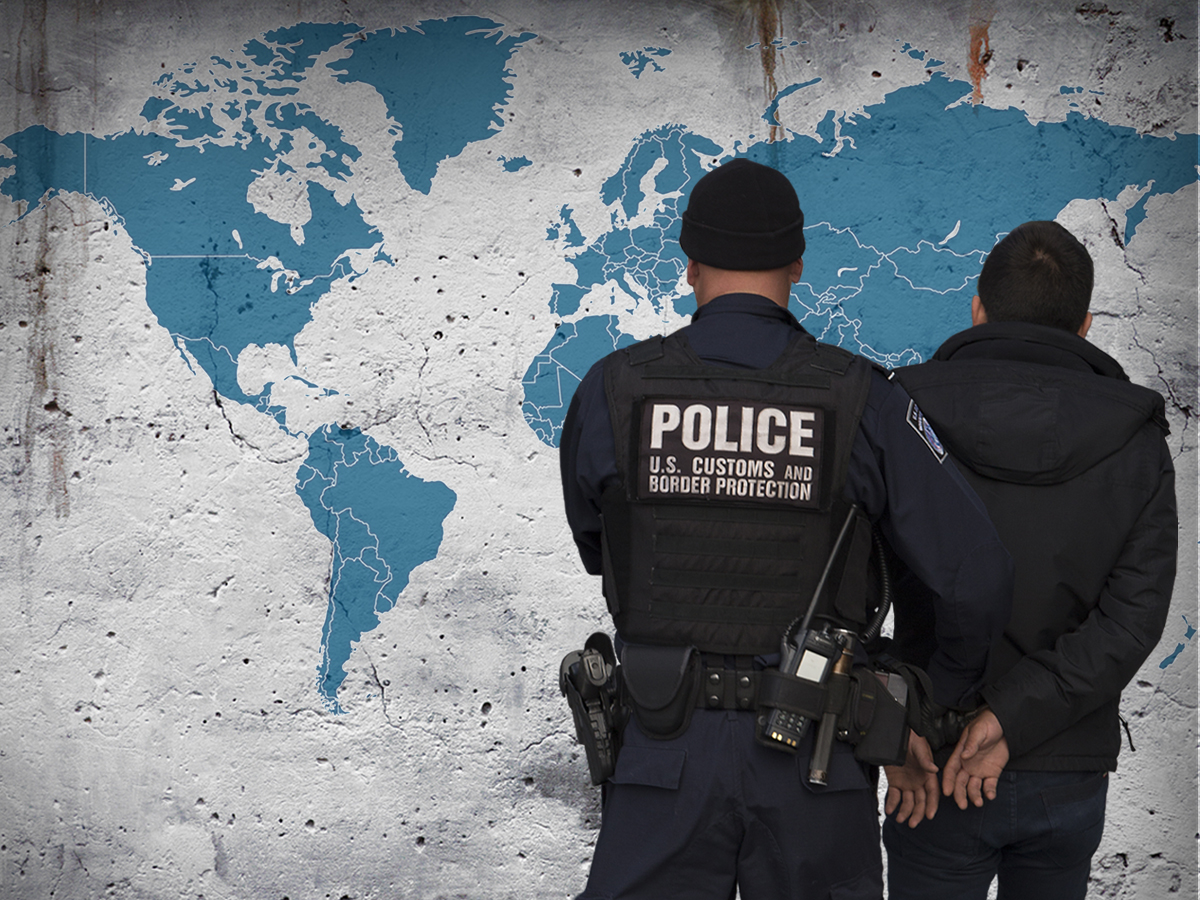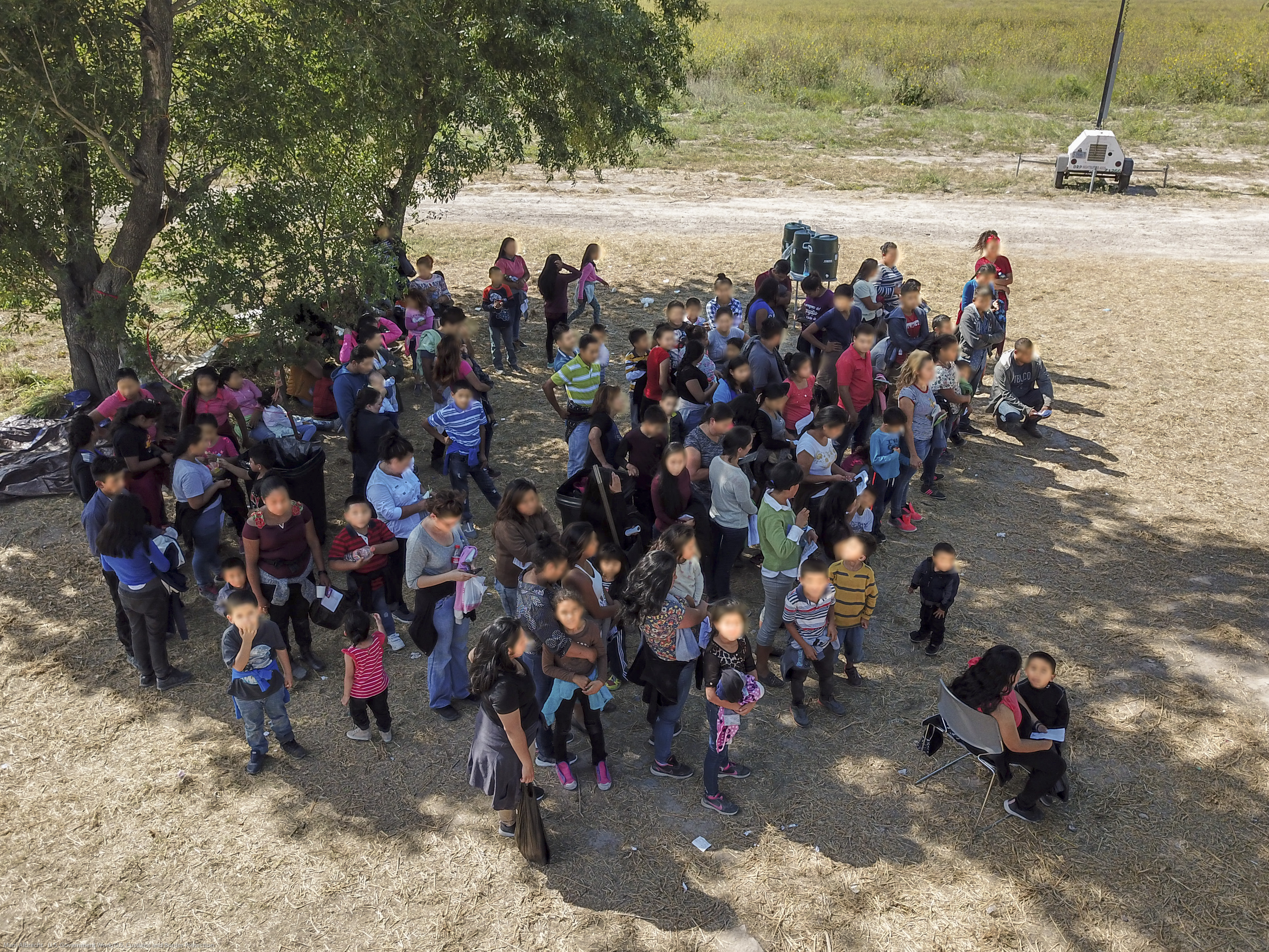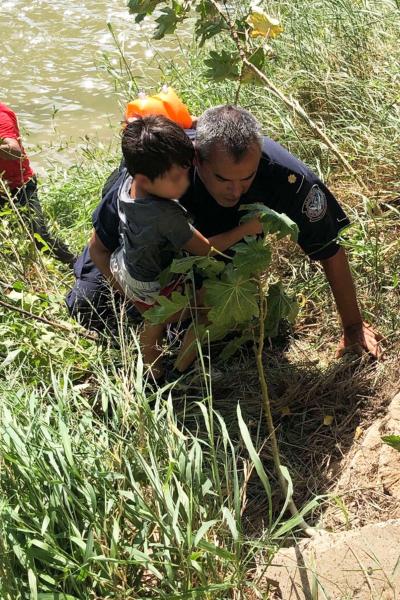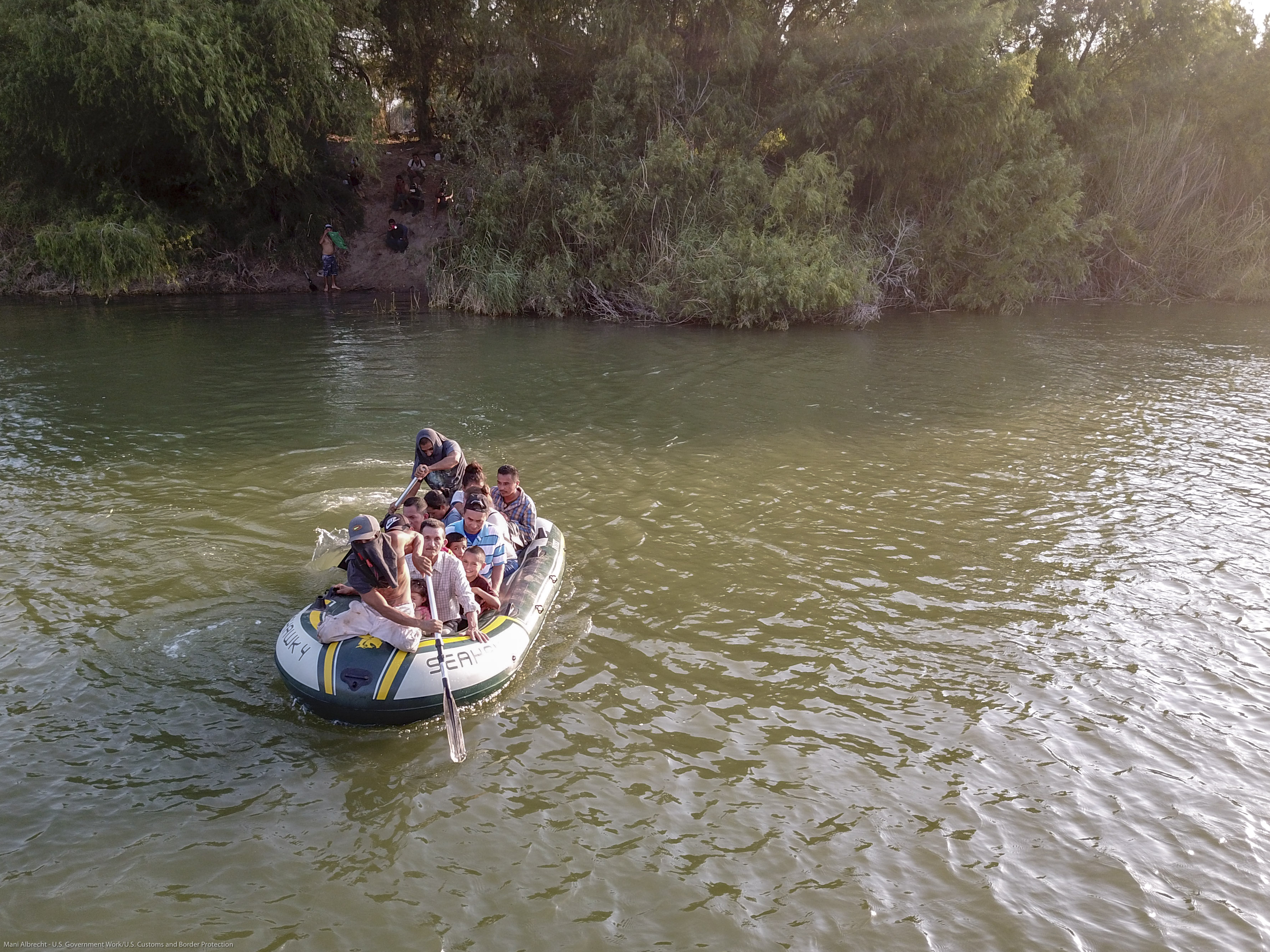
CBP Goes Big to Take Down Human Smugglers
Graphic by Janice Jones
From 2014 to 2016, Sharafat Ali Khan was selling a dream to would-be immigrants: if they paid him thousands of dollars, he’d get them into the U.S. But sneaking them through the desert and across the southwest border wasn’t the easy journey the Pakistani-born, Brazil-based human-smuggling boss was selling to hundreds – possibly thousands – of people who tried to immigrate illegally from Pakistan, Bangladesh and Afghanistan. He was eventually caught, imprisoned and deported back to Pakistan, thanks, in part, to the interviews by Border Patrol agents and U.S. Customs and Border Protection officers who encountered those who crossed illegally.
“We went through the entire process of identifying the subject, getting individuals to confirm that it was him, and, after a long investigation by Homeland Security Investigations with the support of CBP and other partner agencies, including foreign governments, he was arrested,” said a CBP intelligence research specialist in Washington, D.C., whose name is being withheld to protect his identity. Many times, the migrants left high and dry can be more than willing to give up information on the smuggler who left them in the desert. “We used interview notes [from the people encountered on the border], financial information, social media information, and other sources of information as well, leading to the identification of Khan and other individuals associated with him.”
The information gathered was shared with other federal entities that were able to build the legal case against Khan that led to his arrest, extradition to the U.S. to face trial, conviction, sentencing to prison and finally deportation to Pakistan, where he was turned over to authorities there.
“This can’t be done without interagency cooperation,” the intelligence research specialist said. “You have multiple agencies and countries working together; everybody has a little piece of this.”
Now, similar efforts to catch other individuals involved with criminal-organization activities, such as Khan was taking part in, and make their illicit “businesses” unprofitable are being enhanced through Operation Sentinel – a joint operation using assets from CBP, U.S. Immigration and Customs Enforcement’s Homeland Security Investigations, the U.S. Department of State, the FBI, the Department of Treasury and the Drug Enforcement Administration.
“To those who are smuggling people into the United States, we know who you are, and we are coming for you,” said CBP Senior Official Performing the Duties of the Commissioner Troy Miller during an April 27 news conference announcing the operation. “We will take everything we can from you.”
Miller added that the joint operation will hit smugglers where they’ll feel it the most: in their pocketbooks.
“This operation is designed to disrupt every facet of the logistical network of these criminal organizations. Our goal is to enhance the security of the U.S. border and help save the lives of those who are preyed upon by these unscrupulous criminals,” he said.
A large driver behind Operation Sentinel is shutting down the criminals who rake in more than $1 billion in revenue in every month of every year from their unwitting migrant victims. That money is often used to fund more nefarious enterprises, such as modern human slavery, massive deadly narcotics trafficking within the U.S., and even possible terrorist plots from extremist groups overseas.
“We’re not targeting those [criminals] on the ground; we’re hyper-focused on cutting off segments of their logistical components,” said another senior CBP official. “We want to make it clear for these criminal organizations that it’s not worth any possible financial good that might come out of it, from their viewpoint.”
While CBP normally works with other agencies, to also include those at the state, tribal and local level, this operation formalizes the relationship.
“We’re taking a very broad, whole-of-government approach in order to be able to use multiple streams of authority from different organizations and agencies in order to have a law enforcement response to their illegal activities,” said Tony Barker, deputy chief of law enforcement operations for the Border Patrol at CBP headquarters in Washington, D.C., and in charge of CBP’s part of this multi-agency operation. “It’s everything from taking their ability to travel,” by having the State Department revoke visas of the criminal leadership, “to the freezing of assets and bank accounts and their ability to send money” back to the smuggling organizations.

CBP is using intelligence assets it already has in place at its’ headquarters in Washington, D.C. and nearby offices, as well as bringing in intelligence experts from the Northern Border Coordination Center and Border Patrol sectors along the northern and southern U.S. borders – in addition to getting information through remote sources from the field – to make sure the agency uses everything it can.
“We’re leveraging resources and assets from across CBP, across the U.S. government,” said Javier Geronimo Jr., normally the director of the Northern Border Coordination Center but currently assigned CBP headquarters in Washington, D.C., for this operation. “Every targeting system we have at our disposal in CBP we’re leveraging in support of this operation, as well as those systems of our partners, to try and identify [the smuggling organizations’ leadership] in order to [carry out] a swift and immediate law enforcement consequence on them,” adding follow-up prosecutions by the federal Department of Justice adds even more teeth to the effort.

group of people pinned in the middle of the river due to the
strong currents. CBP photo
The heartbreaking stories of migrants taken advantage of, abandoned and left for dead along the southern border is seemingly endless (see Frontline article, “Answering the Call”). A supervisory intelligence analyst at a Border Patrol sector where human smuggling is particularly high said it’s not just foreign-based criminal organizations who exploit those trying to cross the border illegally. In one case, the criminal cartel members were three American brothers with homes on both sides of the U.S.-Mexico border.
“They had houses where they kept all those they kidnapped and would shake them down for more money,” the analyst said. Working with Homeland Security Investigations at the points of entry where the American brothers could cross back and forth between Mexico and the U.S., they caught the trio. “They arrested, indicted and prosecuted them. It was a very successful case.”
As is the case for many migrants, the smugglers were selling a lie to those trying to enter the U.S. illegally.
“The smugglers tell them, ‘Don’t worry, you’ll get there. No problem.’ They don’t tell them about all the challenges,” the analyst said. “Some of them are upset that they were charged [upward] of $15,000, and now they feel like it was bad business. So they’re pretty forthcoming.”
She added that formalizing the arrangement with the various federal, state, tribal and local law enforcement, as Operation Sentinel does, makes past and present efforts that much more fruitful.
“It’s important we have that connection between the tactical and strategic levels. It’s huge that we’re able to identify the network from the point of origin to the point of apprehension,” she said.
A Border Patrol agent, working at the Northern Border Coordination Center and also temporarily at CBP headquarters in Washington for Operation Sentinel, said he understands that fellow agents might see the interviews they do with the people they encounter as tedious and not producing much fruit. But the dividends often pay out years from that initial encounter.
“For agents in the field who do interviews regularly, they’re probably frustrated because it could take a while to see the efforts pay off,” said the agent, whose identity is being withheld. “However, having done interviews in the past and now in a more investigative and analytical role, [I’ve seen] that if those interviews are conducted and documented well, they can prove useful in the future.”
Another reason for CBP to stop the criminal organizations is a sense of compassion for those who try to come to America, oftentimes, just to make better lives for their families.

at an interstate checkpoint thwarted two smuggling attempts
45 minutes apart, which led to the arrest of seven migrants
hidden in car trunks. Three of those in the hot car trunks were
children. CBP photo
“We’re seeing so many people being put in the hands of these criminals who don’t care about [the migrants’] lives. All they care about is making money,” said the analyst from the southwest border. “It’s important we do all we can to stop that.”
By combining CBP’s skill sets of a variety of agents and officers from around the country with those of the FBI, Homeland Security Investigations, the State Department and others, all of the partners can see better the value of their efforts.
“Having the team mentality and being here helps put the whole picture in a better perspective,” the northern border agent said. “When you have somebody that’s close, and you’re working the same stuff together, you can say, ‘Hey, I’ve got this over here. Take a look at this.’ And vice versa. You accomplish a lot more with that.”
No matter the reason – to secure the border, to cut profits for criminals, or to show compassion for those taken advantage of – Operation Sentinel is seen as a whole-of-government approach to stopping the criminal groups.
“Our job in this operation is to make sure that these individuals are not able to freely operate and to conduct their criminal activities,” said the intelligence research specialist in Washington, adding that the more they can make the bad guys divert attention from criminal operations, the less attractive those operations become. “We’re trying to be more proactive than reactive, so we can make them adjust their operations, instead of us adjusting our operations. If we can impact that, we’ll be successful.”



